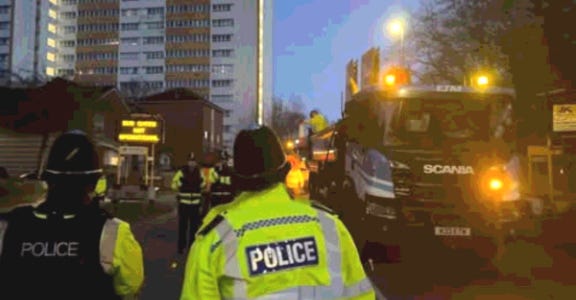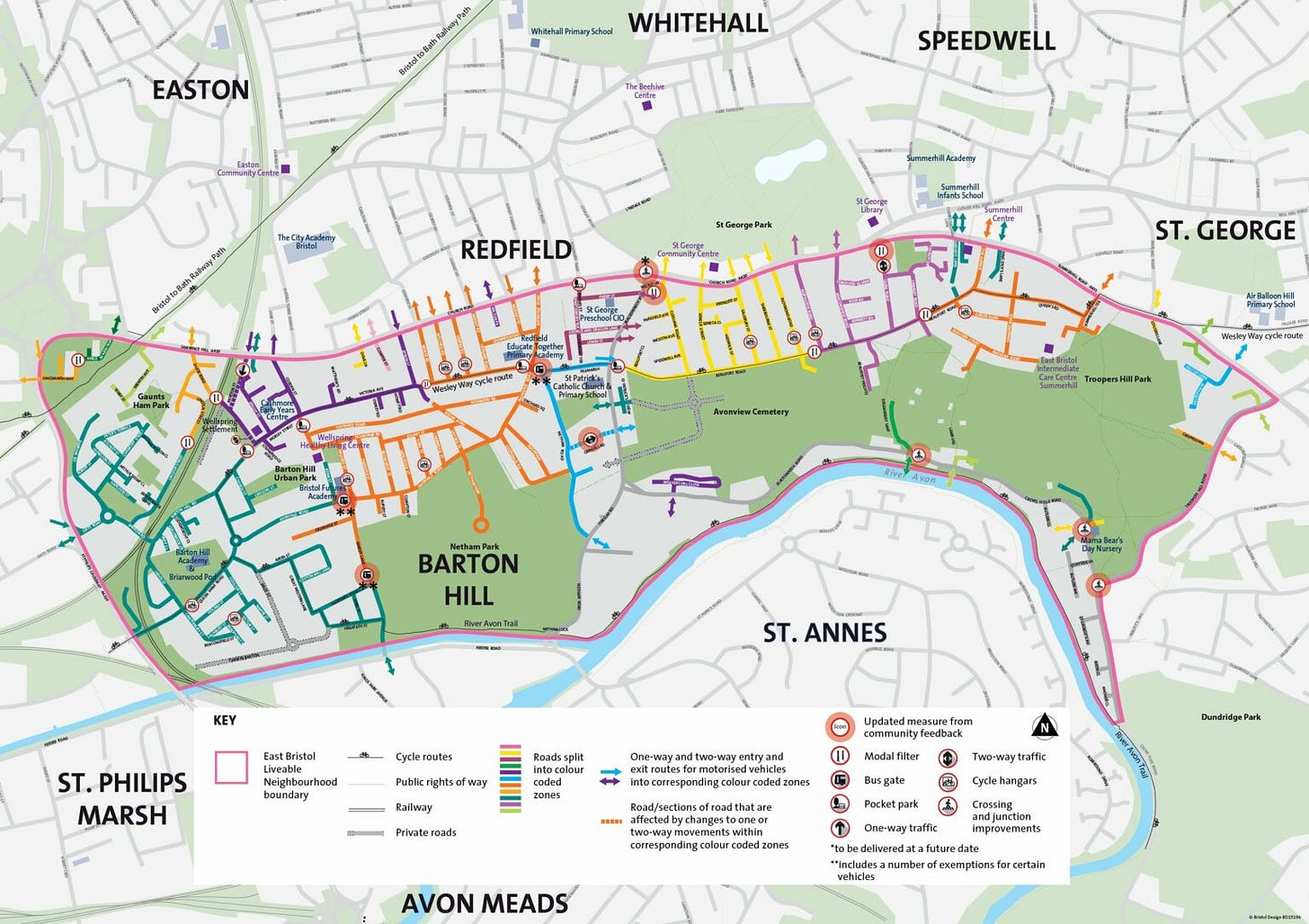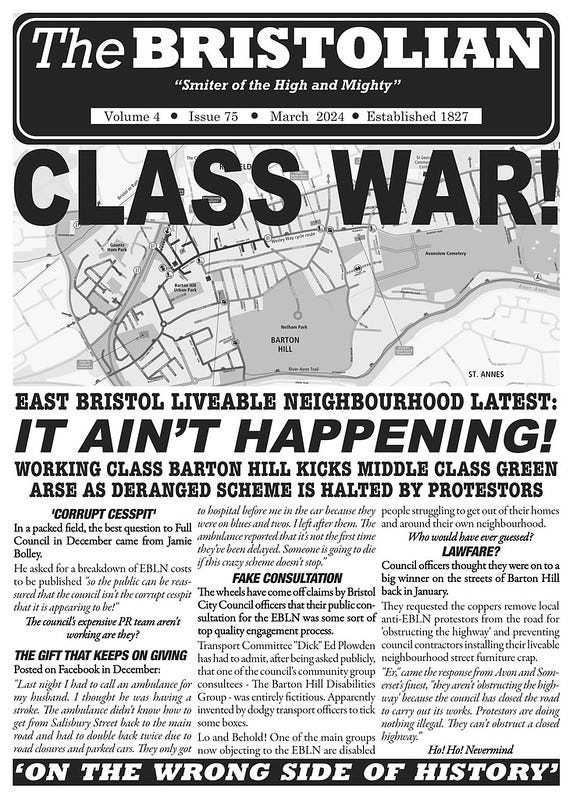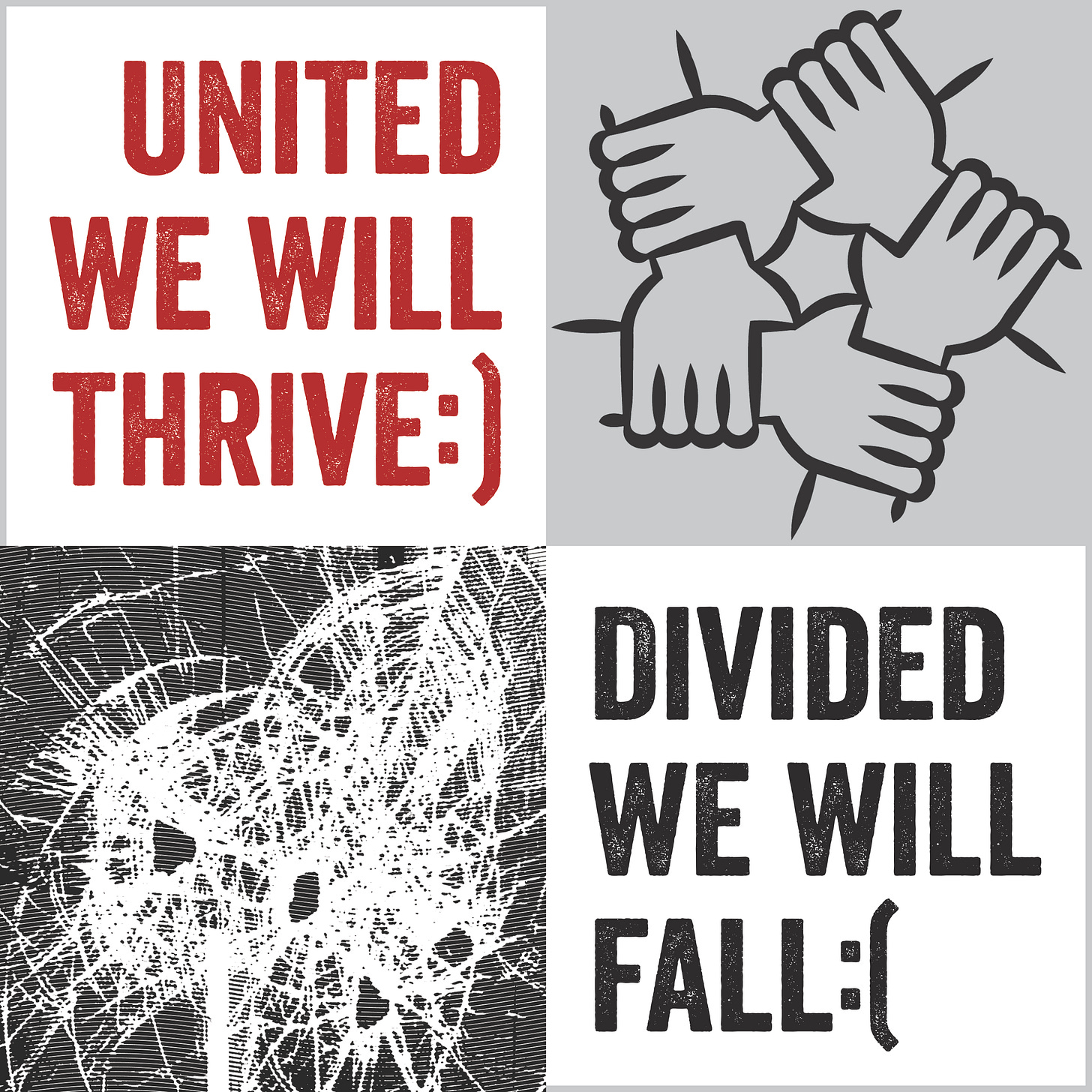I’ve written a fair few posts about the trial implementation of the East Bristol Liveable Neighbourhood (EBLN), with this being the most recent one I published: The East Bristol Liveable Neighbourhood saga rolls on... 12.12.24. I’ve also written a lot of posts about ‘liveable neighbourhoods’ and ‘fifteen minute cities’ which are linked to on this page: Posts on movement. To date, most of the posts I’ve written have been from the perspective of planning and transport, public and private.
However, with the EBLN, there are other issues that have to be taken into consideration if the tensions surrounding its implementation are to be fully understood. Community relations within the EBLN area, and also between those living in the more deprived parts such as Barton Hill and Lawrence Hill on the one hand, and Bristol City Council on the other, is one aspect I’ve not yet addressed.
One reason why I’ve not addressed community relations so far is that I live outside of Bristol, in the neighbouring town of Keynsham. Another is that while I’m reasonably familiar with the area covered by the EBLN, having only moved down to Keynsham from Essex in July 2022, I’m probably still considered as an outsider. However, there are times when an outsider’s perspective may be of some value, which is why I’m making the following observations in what I hope, people will take as good faith.
As you can see from the map above, the EBLN covers a wide area, stretching from the diverse working class communities of Barton Hill and Lawrence Hill in the west, up the hill to the gentrifying areas of Redfield and St. George in the east. Our familiarity with the area started back in 2019 when we were looking to move down to Bristol to be closer to our family and we were looking for a neighbourhood we would be happy to live in – this was one of the areas that we looked at.
What struck us was the stark contrast between the then gentrifying areas of St. George and Redcliffe and the considerably more run down feel of Barton Hill and Lawrence Hill. On an earlier visit to Bristol in 2018 to attend an anarchist bookfair in Easton, what then struck us was the degree of polarisation in the city, social and racial. This was particularly noticeable as we walked north eastwards from the city centre up Stapleton Road towards Easton. I remember coming back from both of those visits and thinking that the town centre of Grays, located in Thurrock just to the east of London, had more in the way of racial diversity and harmony than the centre of Bristol – trust me, that’s really saying something!
Bearing all of this in mind, when I first saw the map of the area of the EBLN, my first thought was that a) it was covering too wide an area and b) with the social and racial polarisation there is within that area, it was inevitable that tensions would emerge between the largely anti western side and the largely pro eastern side. Sadly, it would appear that I have been proven right.
From the outset of the planning and the subsequent implementation of the EBLN, the most trenchant opposition to it has come from the Barton Hill and Lawrence Hill areas. This piece is a very good summary of what those objections are: Ploughing On Anyway in Barton Hill and Lawrence Hill – Helen | Keep Bristol Moving! | 19.2.25. For coverage of the shenanigans involved in the implementation of the EBLN, we recommend that you regularly check out this Substack: Keep Bristol Moving! The class war aspect of what Bristol City Council are trying to impose upon the residents of Barton Hill is covered in this post: EBLN: IT’S CLASS WAR! – The Bristolian | 7.3.25.
All of this was before the events of the early hours of the morning of Thursday 13.3 when contractors came in to install more infrastructure for the EBLN, accompanied by private security and over fifty police officers. Two surveillance drones were deployed and there were two police officers with video cameras. This is some of the coverage about it that has appeared in the local media: Huge overnight police and council operation completes East Bristol Liveable Neighbourhood installation... almost – Tristan Cork | Bristol Post | 13.3.25 and: Council chief defends overnight operation to install bus gate – Tristan Cork | Bristol Post | 13.3.25 and also: Police ‘facilitated roll-out of council-led scheme’ in Barton Hill – Martin Booth | B24/7 | 13.3.25.
All of this just to install some planters and other bits of equipment and signage. In part, this shows the recognition by Bristol City Council of the strength of opposition to the implementation, and their determination to overcome that with what to all intents and purposes, was a show of force. However, it could be read as a ploy to discredit opponents of the EBLN by saying they had to resort to these measures to get the job done. I’m pretty certain that there will be elements disingenuously spinning things that way – some of the pro EBLN supporters have already shown they have little in the way of scruples.
The city council and the pro EBLN supporters can spin this operation any way they like. The harsh truth is that to any unbiased observer, it looked like an army of occupation being sent in to make a point that the scheme is going ahead regardless of any opposition and oblivious to any of the concerns being expressed by residents. Sending a largely white contingent of cops and contractors into a racially diverse, working class neighbourhood isn’t a good look. What the powers that be need to be aware of is that the racially diverse objectors to the EBLN will be acutely aware of any attempts at divide and rule. The opposition to the EBLN and the tactics of sending in what looks like an army of occupation is class based – working class versus a city council that won’t listen to them and also, versus the middle class liberal types clamouring for the EBLN while making little or no attempt to understand why people are objecting to it.
This post on X from Fadumo Farah and this video clip she recorded which is embedded in the post is pretty instructive as to how people felt about the operation. This operation hasn’t done the police any favours in terms of their relations with the community in Barton Hill and Lawrence Hill. It certainly hasn’t done the Green led Bristol City Council any favours when it comes to their relations with the community. Some people may have naively thought that a Green led city council would be a little more sensitive when it comes to community relations and that they wouldn’t resort to sending in an army of occupation to a racially diverse working class area. Somehow, I think that there are going to be a fair few people across the city with shattered illusions after this.
Despite all of this, there are still people across Bristol who are applauding this operation. The mask has slipped off the faces of the so called environmentalists supporting the EBLN. It would appear that their attitude is to support implementation by ‘any means necessary’ regardless of the cost in community relations. In a city that’s as socially and racially polarised as Bristol is, supporting what to all intents and purposes felt like a hostile invasion of a community is tantamount to throwing more fuel on an already burning fire. There are some people in this city who really need to be taking a good look at themselves over the next few days and weeks...
If Bristol City Council are allowed to get away with this operation without censure, it will be used to send out a signal to people elsewhere in the city mounting opposition to the implementation of so called ‘liveable neighbourhoods’. The next major battleground for this is going to be in the south of Bristol. Will the people of south Bristol tolerate this kind of heavy handed operation when push comes to shove? This will be an interesting one to watch...









Bristol is essentially a Tale of Two Cities: there's the Capital of Woke in the historic core of central Bristol, all hand-knitted yoghurts and over-priced artisan products, and then there are the northern, eastern and southern suburbs (like the banlieu around French city centres) where the economically and socially deprived denizens live, aka "the working classes". No western fringe, as that's across the Avon Gorge into Somerset countryside.
I lived in central Bristol twice, first in the mid-1980s and again in the 00s. In the 80s we had the St Paul's riots 2.0 and some horrific social problems in the housing estates in the northern and southern fringes. A friend of mine worked as a housing officer back then and related eyewitness accounts of the local yoofs in the suburb of Southmead trapping a puppy in an upturned shopping trolley out of sheer boredom and setting fire to the poor thing for fun.
Since then Bristol has steadily gentrified from the centre outward. So much so that the council and policy makers seem to have forgotten that working class people actually still exist. My story from the 00s relates to my then neighbour who worked as special education officer or such for the council, meaning basically working with the kids who got expelled from school for violence and other misdemeanours that meant no "normal" state school would take them anymore. Her job entailed travelling all over Bristol to see these kids and make sure they engaged. For that she needed her own transport in all weathers. As a lady in her late 50s and asthmatic that meant a car, a bike not being an option for her needs. Too bad the council's then transport policy did not see it like that, but the traffic plans, parking restrictions and other such obstacles meant that she could no longer carry out her work and retired early.
I've related these two anecdotes to try and highlight the discrepancy between the laptop class bubble living and working (from home or their local coffee shop) in central Bristol and those people in the surrounding working class areas. The two are like different species. Unfortunately policies are only made by one lot.
For a council to be this desperate to pursue their agenda they must be absolutely, well, desperate. It's beyond astonishing.